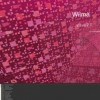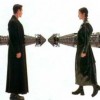Magic Classroom
United States,
The Magic Classroom is a web3D lecture hall. It is a synchronous online environment capable of presenting diverse forms of educational content. It's methodology positions presence, realism, and immersion as tools for moderating student behavior and achieving educational outcomes. Secondly, The Magic Classroom explores the strengths and limitations of digital worlds — the impact of mouse, keyboard, and computer screen on the design of virtual space. The key is deceptively simple; the teacher’s avatar is empowered like a videogame character. The teacher’s avatar shape-shifts into 2D slides, 3D models, and 3D worlds. The result is a native space blending interface and environment design.
(Previous iterations were also known as Bespace)
Editor's Critique
Three items of a note in this work:
1) The use of an Avatar as a content delivery mechanism. Rather than remain a faux human shape, the avatar becomes a means for communication. Scholar Ken Hillis offers this quote:
"Guynup and Carlson trade in the fetishism identified by Baudrillard as a fetishism of the signifier itself".
Going further, VR artist Adam Nash takes this idea into new territory with his thoughts on VR as a a Post-Convergent Medium and in his musical performance works.
2) The ability to present 3D work (not just 2D images) would seem an obvious and desirable function for virtual worlds (especially classrooms). It is not. There are no products or people doing this aside from myself.
There is no pride or arrogance in the comment above, only sadness. I would much prefer working with others.
3) The challenges to this work run the spectrum from odd technical challenges, like Unity3D's inability to load scripts on the fly to the more cultural, as in teachers who think that online education is all about students doing work on their own schedule.
- Genre: Yes, VRML / X3D, Education, Edited, PC
- Year: 1999 - 2005
- Awards: Avvy Award Best Conceptual Advancement
- Websites: Magic Classroom / Bespace HCI Walkthrough





